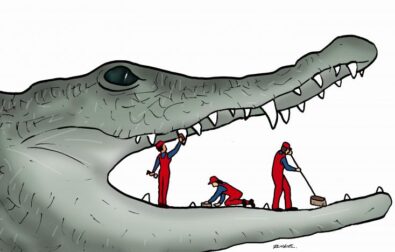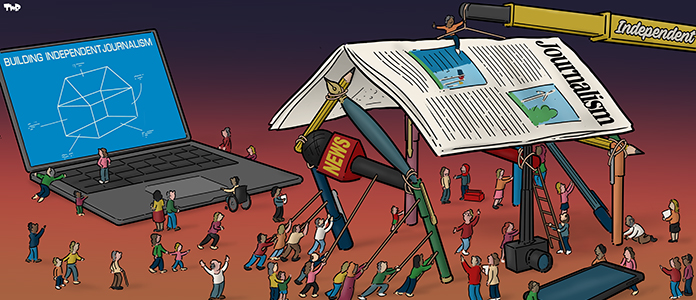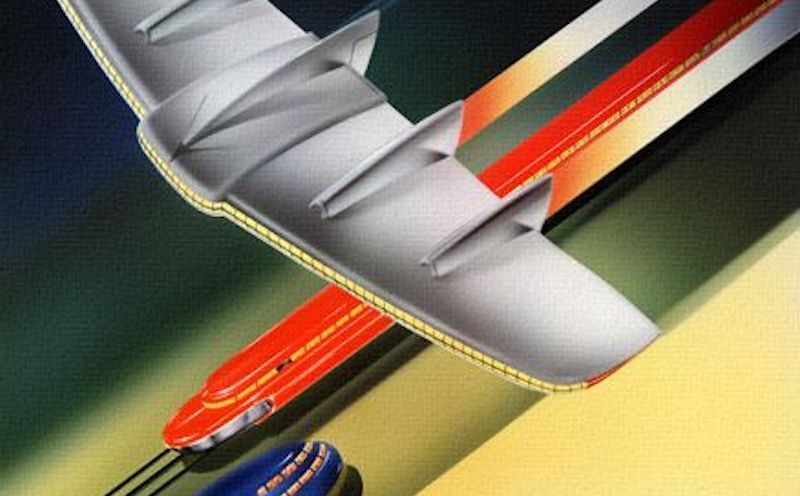There's one rather simple way Europeans could lower their CO2 emissions: choose the train instead of the plane for travel within the continent. Europe's rail network is dense, and in many countries relatively fast, and already offers a reasonable alternative to about half of the most popular short-haul air routes.
Apart from island destinations unreachable by rail, a study we carried out for Greenpeace shows that for 34 percent of the 150 busiest air routes within the European Union there is a rail alternative taking less than six hours. Of the routes that take more than six hours, more than a quarter are covered by direct night trains or take less than 12 hours. Including European countries outside the EU, similar percentages of the busiest 250 routes in Europe, at least theoretically, have a rail alternative.
If passengers actually started using trains instead of planes for these journeys, 54 million fewer people would travel by plane each year, saving 3.5 million tonnes of CO2.

Tracking the duration, itinerary and distance of possible rail alternatives to the most popular flights, the options that emerge are surprisingly good. For 84 percent of the flights considered, it is possible to travel the same route by train in the same day, even for apparently long-distance routes, such as Amsterdam-Madrid, Rome-Brussels or Paris-Warsaw. In 82 percent of cases, there are direct trains between the city of departure and the destination, or just one or two changes are required.
Interesting article?
It was made possible by Voxeurop’s community. High-quality reporting and translation comes at a cost. To continue producing independent journalism, we need your support.
Of course, there are also cases where the train will never be a reasonable alternative, unless a ferry is taken. In addition to most European islands, this is also the case for cities separated by sea, such as Rome and Athens, or Helsinki and Stockholm.
Essential improvements
While in many cases they are already at least theoretically competitive with air trips, rail connections within Europe could be improved on several points.
For example, there is a direct train between Vienna and Bucharest, but it moves at an average of 55 km/h and takes over 19 hours to reach its destination. In other cases, waiting times at intermediate stations lengthen the journey disproportionately: Milan and Vienna are relatively close, but day travellers have to change train four times during their trip - as with the route from Amsterdam to Copenhagen.
Infrastructure improvements, or even the simple introduction of new connections on the existing network and scheduling, would ensure that the railways could grab an even larger share of European transportation from the airways.
Specific, strategic railway lines and hubs are particularly important here. For example, a large number of alternatives to the main internal EU air routes run via the Paris-Barcelona line. Yet before the pandemic there were only three direct trains per day between the two cities - now reduced to two - and no direct night trains. Then again, in some cases it is only necessary to travel from Paris to Italy, or from Spain to Germany, because existing rail connections in the Alpine region are poorly served. For example, good connections between Marseille and Milan or Lyon and Basel could prove very valuable.
Within individual countries, trains are already a clear alternative to airplanes, at least in countries with fast rail networks. However, International connections remain a major weakness, relying on just a few lines, and often offering only a few trains per day.
Another weakness is night trains, which would allow rail to compete with aircraft on longer routes. There are only a handful of night trains within the European Union, and with the outbreak of the pandemic, some of the most important routes in this regard, such as Venice-Milan-Paris, have been discontinued.
Finally, it is likely that at least some of the people who fly between two nearby cities already well served by trains actually do so in order to reach another flight. In order to offer a real alternative to these passengers, it is not enough to have decent rail connections between the two cities: we also need direct or fast connections with major airports, which are currently rare in Europe.
Future scenarios
Over the next few years more and more trains will offer, at least on paper, a good alternative to European air travel, thanks to the introduction of a series of new international night trains and the completion of some major improvements on the network, such as the Brenner base tunnel.
However, additional measures will be required to ensure that passenger traffic really does make the transition, and that transport-related CO2 emissions are reduced accordingly. One option is the cancellation of short-haul flights, which is under discussion in France, Austria and Belgium. Greenpeace, for example, is asking the European Union to close air routes for which there is a train alternative that takes less than 6 hours.
However, action is also required on prices: on the one hand, by subsidizing rail transport and encouraging competition between operators, and on the other hand by increasing taxation on air transport.
METHODOLOGY
| We collected data on the durations of current rail connections and those that from 2019, prior to the COVID-19 pandemic. We also collected data on the routes, number of transfers, and distances traveled by the trains in question. We excluded air routes over 1500 km, and routes to islands unreachable by train, such as Ireland or the Canary Islands; some of these are extremely busy. More details can be found in the report [link]. |
👉 Original article on OBC Transeuropa












